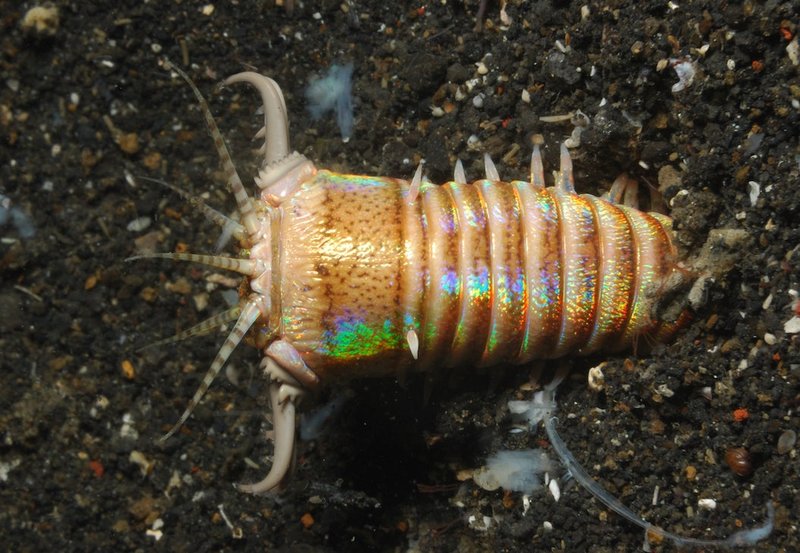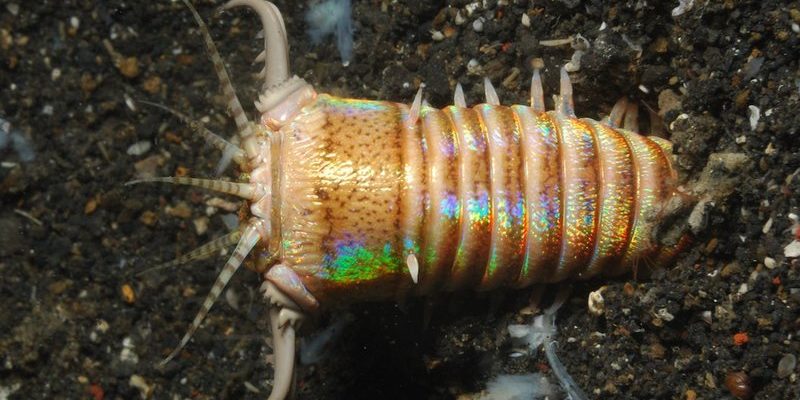
Imagine a creature that can lie in wait for hours, camouflaged among the coral and sand, ready to strike with lightning speed. That’s the Bobbit worm for you! While they may seem like a scary addition to the underwater world, they play a crucial role in their ecosystem. So, let’s dive deeper into what makes these worms so fascinating and why they’ve earned such a notorious reputation.
What Exactly is a Bobbit Worm?
Bobbit worms belong to the family Eunicidae and can grow anywhere from 3 to 10 feet long, depending on the species. Their scientific name is *Eunice aphroditois*, but the nickname comes from their somewhat fearsome reputation. These worms have long, segmented bodies and vibrant, colorful bristles—almost a beautiful sight until you realize what they’re capable of.
Typically found in tropical and subtropical waters, Bobbit worms make their homes in burrows on the ocean floor. They’re skilled architects, crafting their burrowed hideouts from sand and debris, which helps them stay hidden from both predators and prey. You might be surprised to learn that they can have multiple burrows throughout a reef, each serving as a strategic ambush point.
How Do Bobbit Worms Hunt?
Here’s the thing: Bobbit worms are ambush predators, and they’re incredibly effective at what they do. They wait patiently for a meal to swim or crawl by, often camouflaged so well that you’d hardly notice them. When the moment is right, they strike with astonishing speed, extending their jaws to capture prey.
Their jaws are not just for show. Equipped with sharp teeth, they can snatch up fish, crustaceans, and even other worms. This remarkable hunting technique is what has made them infamous in the marine world. Imagine having a long, snake-like body that can whip out with the speed of a striking cobra; this is what gives the Bobbit worm its fearsome reputation.
Interestingly, they don’t just grab and go—they often drag their prey back into their burrow for a more secure meal. This behavior can be a bit unsettling, but it’s a part of the natural cycle that sustains life in the reef.
The Role of Bobbit Worms in the Ecosystem
While they may seem like a terrifying monster, Bobbit worms play a vital role in their environment. By controlling the population of smaller fish and invertebrates, they help maintain a balance within the reef ecosystem. If Bobbit worms weren’t around, we might see an overpopulation of certain species, which could lead to disruption.
These worms are also scavengers at times, consuming organic debris that floats down to the ocean floor. In doing so, they help recycle nutrients back into the ecosystem, contributing to the health of coral reefs. So, while they might give you nightmares, their presence is essential for the delicate balance of marine life.
Common Myths and Misconceptions
You might be wondering if Bobbit worms are dangerous to humans. Honestly, they’re not a threat to us unless we’re diving deep into their territory. The idea of them being a “nightmare” often comes from their hunting prowess and their scary looks. They typically won’t attack unless provoked, which is why it’s essential to respect their space if you encounter one while snorkeling or diving.
Another myth is that they are aggressive creatures that will chase down larger animals. In reality, they prefer to stay hidden, only striking when they have a clear advantage. Think of them more like a stealthy predator rather than an outright aggressor.
How to Spot a Bobbit Worm
If you’re ever diving in tropical waters, spotting a Bobbit worm is a thrilling experience—if you know what to look for. They can be quite elusive, but there are a few signs to help you identify them:
- Burrows: Look for long, winding holes in the reef. These are usually the worm’s homes.
- Colorful appendages: During the day, you might catch a glimpse of their brightly colored tentacles peeking out of their burrow.
- Movement: If you see something writhing or moving quickly in the water, it might just be a Bobbit worm preparing to strike.
If you’re lucky enough to spot one, just remember to keep your distance. They’re best admired from afar, where you can appreciate their beauty without putting yourself in danger.
The Fascination with Bobbit Worms in Popular Culture
Over time, Bobbit worms have made their way into various media, often depicted as the epitome of oceanic horror. They’ve captured the imagination of filmmakers and storytellers who love to highlight the bizarre and fearsome aspects of marine life. For instance, they’ve been featured in documentaries showcasing the raw power of nature and the hidden dangers of the ocean.
You might have also come across memes or social media posts that play on their terrifying reputation. It’s interesting how these creatures have gone from being a lesser-known aspect of marine biology to a trending topic among ocean enthusiasts and horror fans alike.
Bobbit worms might seem like the stuff of nightmares, but they’re also a vital part of marine ecosystems. These incredible creatures showcase the beauty and brutality of nature in equal measure. The next time you think about coral reefs, remember that not everything in the ocean is as harmless as it appears.
While they can be intimidating, Bobbit worms remind us of the intricate balance of life in the sea. They’re fascinating, a bit scary, and utterly important all at once. Whether you encounter one in person or see them featured in a documentary, understanding them adds depth to our appreciation of ocean life. So, if you ever hear someone mention Bobbit worms, you can share what you know about these “nightmares of the reef” and their essential role in keeping our oceans healthy.

